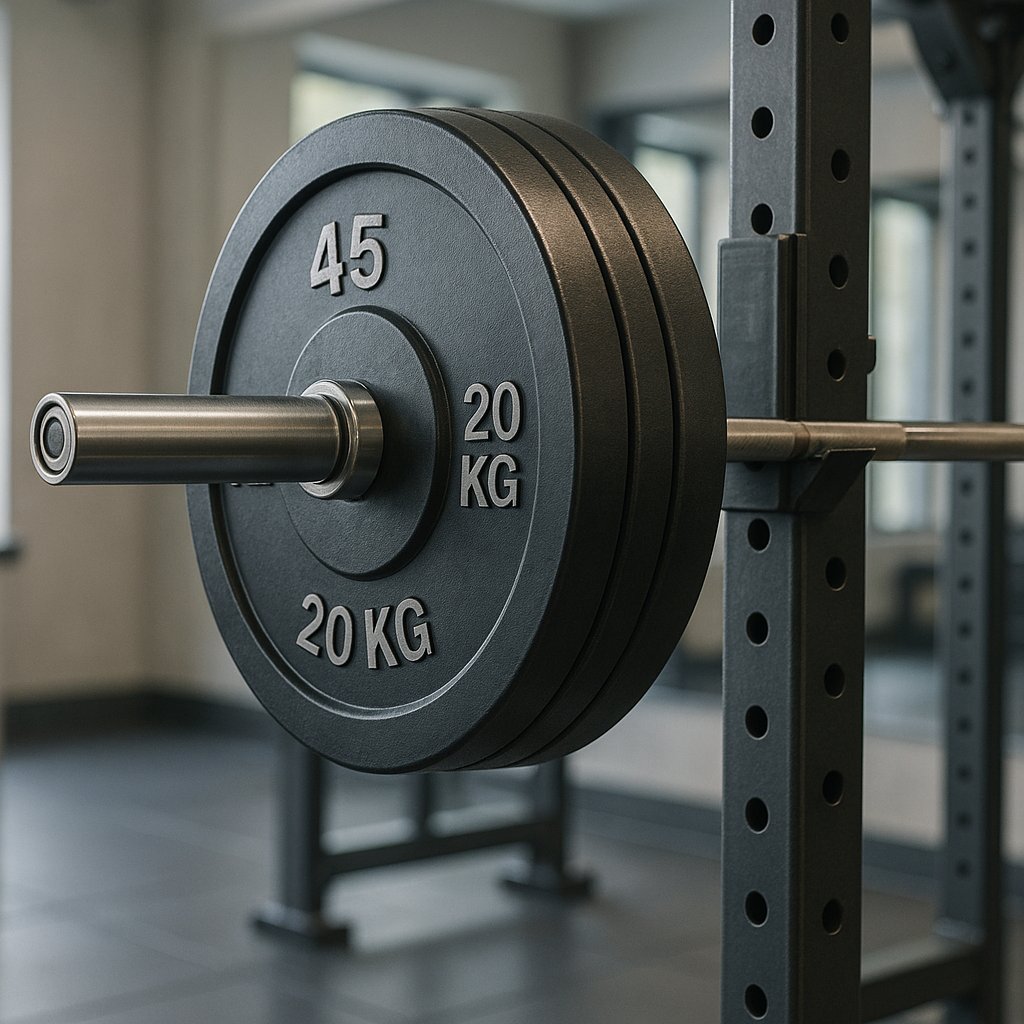In gym and lifting culture, “a plate” almost always means a 45-pound (20 kg) weight plate commonly used on barbells. So, when someone says, “I bench one plate,” they mean 135 pounds total (one 45-lb plate on each side of a 45-lb barbell). Understanding what “a plate” means is crucial for accurate training, tracking your progress, and communicating with other lifters. This gym slang is used everywhere, from local fitness centers to competitive powerlifting events.
Whether you’re new to lifting or just want clarity, this guide explains what a plate is, the common plate weights, regional differences, and how this terminology shapes gym culture. You’ll also find quick reference tables, examples, and official resources for more info.

What Is a “Plate” in the Gym?
A “plate” is a round weight disc designed to fit onto barbells or other lifting equipment. There are two primary types:
- Olympic Plates: The global gym standard, these have a 2-inch (50 mm) hole for Olympic barbells. The most recognized size is the 45-pound (20 kg) plate.
- Standard Plates: Usually with a 1-inch (25 mm) hole, used for smaller bars and some home gyms.
In the U.S. and most gyms, “a plate” refers specifically to the 45-lb (20 kg) Olympic plate.
Source: Wikipedia – Weight Plate
Common Plate Sizes and What They Weigh
Gym plates come in a range of weights, but a “plate” almost always means the 45-lb version. Here’s what you’ll find in most commercial gyms:
| Plate (lb) | Plate (kg) | Common Use |
|---|---|---|
| 2.5 lb | 1.25 kg | Micro-loading, fine adjustments |
| 5 lb | 2.5 kg | Light warm-ups, accessory lifts |
| 10 lb | 5 kg | Beginners, warm-ups |
| 25 lb | 10 kg | Intermediate progressions |
| 35 lb | 15 kg | Less common |
| 45 lb | 20 kg | Standard “plate” everywhere |
| 55 lb | 25 kg | Some specialty/competition gyms |
Bumper plates (rubber-coated, safe for dropping) follow the same denominations.
Source: Major Fitness: How Much is a Plate Weight?
What Does “One Plate,” “Two Plates,” etc. Mean?
In gym slang:
- “One plate” = a 45-lb plate on each side of a 45-lb barbell (total 135 lb/61 kg)
- “Two plates” = two 45-lb plates on each side (total 225 lb/102 kg)
- “Three plates” = three per side (total 315 lb/143 kg)
- And so on…
Quick Reference Table:
| Phrase | Plates Each Side | Barbell Weight | Total Weight |
|---|---|---|---|
| “One plate” | 1 × 45 lb | 45 lb | 135 lb |
| “Two plates” | 2 × 45 lb | 45 lb | 225 lb |
| “Three plates” | 3 × 45 lb | 45 lb | 315 lb |
This shorthand is used for all the classic lifts: bench press, squat, deadlift, overhead press, and more.
Why Plate Terminology Matters
- Universal language: “One plate” or “two plates” instantly conveys lifting ability to other gym-goers, regardless of experience.
- Faster communication: Instead of saying “I bench 225 pounds,” just say “two plates.”
- Motivation: Chasing a “two plate bench” or “three plate squat” is a common milestone.
Reference: Reddit r/Fitness – What do people mean by ‘plate’?
International & Equipment Differences
- Metric gyms: In many countries, plates are labeled in kilograms. One “plate” is usually 20 kg (~44 lbs).
- Standard vs Olympic: Standard (1-inch) plates may come in different sizes, but the “plate” usually still refers to the largest available (typically 20 kg or 44-45 lbs).
- Machines: Selectorized gym machines often have plates labeled in pounds or kilograms, but these might not correspond to free-weight “plates.” Always check the machine’s labeling and instructions.
FAQs: Common Questions About Plates
Do all gyms use 45-lb plates?
Most commercial gyms in the U.S. do. But always double-check, especially if you’re in a specialty or international gym.
Why do bumper plates look bigger, even when they weigh less?
Bumper plates are designed for Olympic lifting and are all the same diameter, regardless of weight, to allow safe dropping. Their thickness varies by weight.
Can I assume the bar is always 45 lbs?
The standard Olympic bar is 45 lbs (20 kg), but some bars (especially in home gyms or for specialty exercises) may be lighter or heavier. Always check the end of the bar or ask gym staff.
Current Plate Pricing & Where to Buy
- As of July 2024, 45-lb Olympic plates range from $1.80 to $3.00 per pound depending on brand, quality, and finish.
- Example: 45-lb Rogue Fitness basic plate ≈ $90–$120 (Rogue Fitness, 2024).
- Budget brands and secondhand options may be less, but check weight accuracy!
- Competition-calibrated plates cost significantly more due to strict weight tolerances.
Conclusion
A “plate” in gym talk is almost always a 45-lb (20 kg) Olympic weight plate—an essential unit in lifting culture.
Knowing this makes gym communication easier, helps set your training goals, and keeps you in sync with the fitness community. Ready to start stacking plates and smashing your PRs? Check your gym’s equipment, load up the bar, and track your progress!
Need help with lifting form, plate math, or equipment questions? Visit your gym’s front desk or check their FAQ page—or drop your question below. Start lifting smarter, not just heavier!
